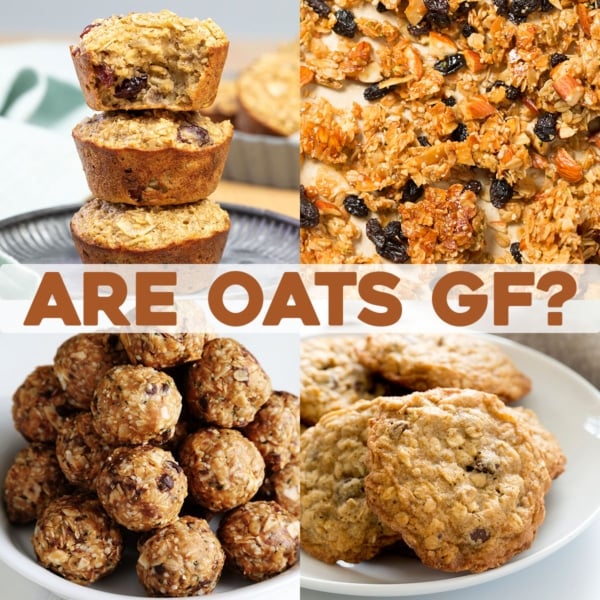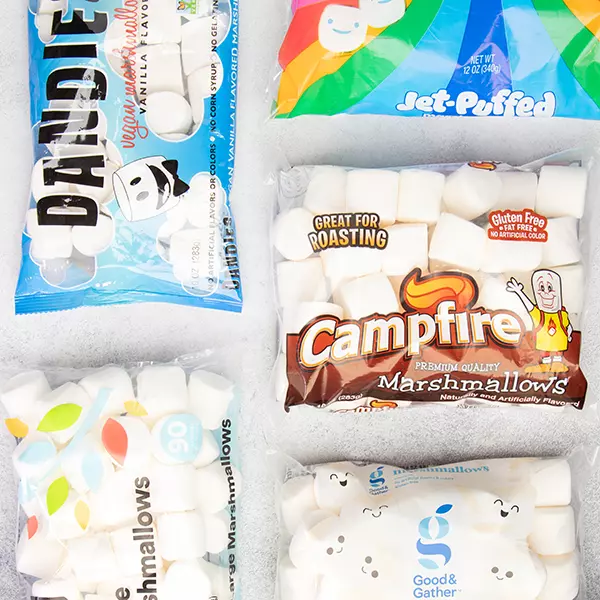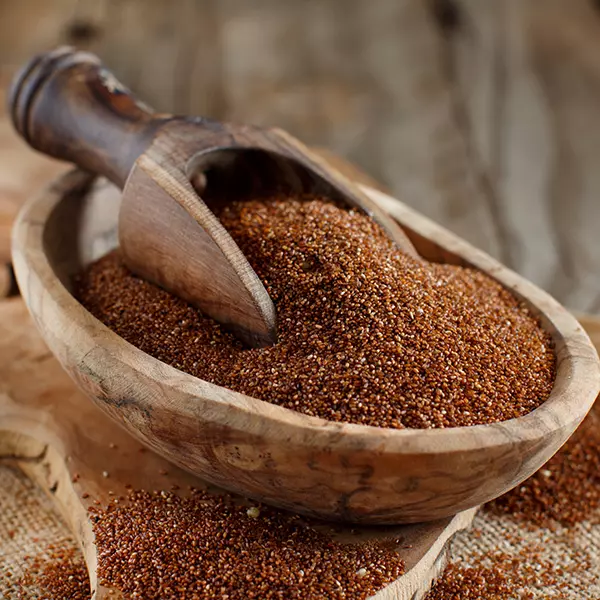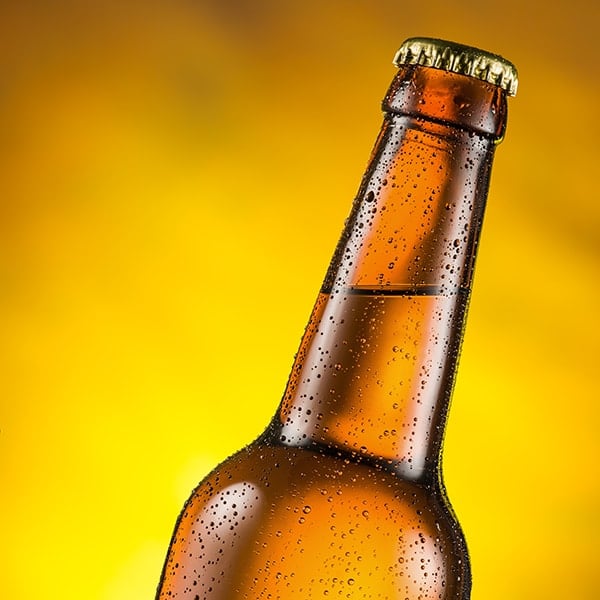This post may contain affiliate links. Please read our disclosure policy.
So, you, or someone in your household suddenly finds they have to start a gluten free diet right away. It can most definitely catch you off-guard and may lead to some panic. But don't worry: the learning curve seems steep, but you can understand the gluten free basics quite easily.
When I was told my very young son needed a strict gluten free diet in 2005, I had to adapt quickly, without much information. Today, my life's work is to help you get started and to hold your hand along the way as you learn all about eating gluten free.
We have endless gluten free recipes for all your favorites, so you won't have to give up anything. And many of them are way easier than you might think. This article is about the gluten free diet for beginners. If you're more advanced, you may want to dive right in to the gluten free baking guide, or straight into all my recipes. It's an index to look for your old favorites.

Disclaimers: All of the content on this website, including this page, is for educational purposes only and does not constitute medical advice, which I am not in any way qualified to give. All information, especially about processing and labeling, is specific to the United States.
Affiliate disclosure: Product links contain affiliate codes. Please see our disclosure policy.
What is a gluten free diet?
A gluten free diet is one that excludes gluten. Gluten is a family of proteins found in grains like wheat, barley, and rye. It acts like a glue that holds food together, maintaining its shape and giving it that characteristic chewy texture we often associate with bread, pasta, and other baked goods.
A gluten free diet for beginners and the more experienced among us is a lifestyle that requires careful attention to what we eat. It means avoiding obvious sources of gluten, like bread or pasta, but also hidden sources of gluten in many processed foods, and anything you put on your skin or otherwise in your body.
But don't let that intimidate you. While it may seem daunting at first, a gluten free diet quickly becomes second nature.
Why follow a gluten free diet?
Anyone with a gluten-related disorder should follow a gluten free diet. This generally includes people with celiac disease and non-celiac gluten sensitivity (NCGS). Whether you have a diagnosis, a doctor suggested you might try a gluten free diet, or you've found you feel better without gluten, you are welcome here!
Non-celiac gluten sensitivity (NCGS)
People with non-celiac gluten sensitivity (NCGS) experience symptoms similar to those of celiac disease, but without the damage to the small intestine of celiac disease.
Symptoms of NCGS begin after eating gluten and can include abdominal pain, bloating, diarrhea, constipation, headaches, bone or joint pain, and chronic fatigue.
Diagnosing NCGS can be hard because there's no specific test for it. Doctors rule out other conditions (like celiac disease and wheat allergy) first. Regardless, it is a real condition that can significantly impact an individual's quality of life.
If you suspect you might have NCGS, please seek medical advice before starting a gluten free diet. The elimination of gluten from your diet can affect test results if you haven't already been tested for celiac disease.
Celiac disease
Celiac disease is an autoimmune disorder that occurs in genetically predisposed people where the ingestion of gluten leads to damage in the small intestine.
When someone with celiac disease eats gluten, their body's immune system attacks the attacks villi in the small intestine, which are small finger-like projections that are responsible for nutrient absorption. This can lead to malnutrition, among other things.
Celiac disease symptoms vary widely, from bloating, pain, diarrhea, weight loss, and malnutrition, to pain in the nerves or joints. Some silent celiacs show no outward symptoms, yet their small intestine is still being damaged.
The only currently known effective treatment for celiac disease is strict adherence to eating gluten free.
Benefits of a gluten free diet
If gluten is affecting your health for any reason, adopting a gluten free lifestyle can be transformative. Some of the potential benefits are:
- Reduced pain and inflammation, which can reduce pain and discomfort.
- Improved digestive health, including potential benefits like less bloating, cramping, constipation and/or diarrhea.
- Increased energy levels, leaving you more vibrant and alert
- Improved nutrient absorption if you have celiac disease particularly, as the villi in the small intestine have a chance to heal.
- Weight management may come along with making better and healthier food choices, or as a result of having more energy and a renewed ability to exercise.
What gluten-containing ingredients should you avoid?
There are four main types of gluten-containing grains: wheat, barley, rye, and triticale:
- Wheat is the most common source of gluten, and all varieties of it must be avoided on a gluten free diet. These varieties include: spelt, kamut, farro, and einkorn.
- Barley is another common gluten-containing grain. In addition to being added to soups and stews for its chewy texture, barley is often used to make malt, which you also must avoid
- Rye is another gluten-containing grain, and it's commonly found in rye bread, pumpernickel bread, many beers, and some breakfast cereals
- Triticale is a hybrid grain that was made by crossing wheat with rye. It's often used as a flour in breads and other baked goods.
Common food products containing gluten
Gluten is in food, of course, but it also appears in the most random products, even shampoo. Those with significant sensitivity or gluten-related disease, including dermatitis herpetiformis, need to avoid even this level of gluten exposure.
Here is an overview of these common examples:
- Breads and baked goods: It's safe to assume that all traditional breads and baked goods that are made with some form of wheat. Gluten gives these baked goods their structure and chewy texture.
- Processed meats: Many deli meats and hot dogs contain gluten as a filler or binder; meatballs and meatloaf usually contain traditional breadcrumbs, which are off-limits. There are some brands of processed meats that are safe on a gluten-free diet, like Applegate, Boar's Head, and Dietz & Watson, but always read labels.
- Sauces, soups, and condiments: Gluten is often used as a thickener in gravies and sauces and as an anti-caking agent in marinades. Soy sauce is made from wheat, so avoid it in favor of gluten free tamari or gluten free soy sauce brands. Consider making your own sauces and condiments at home so you can control the ingredients. For example, my gluten free barbecue sauce is so easy and tastes better than store-bought.
- Anything with malt: included malted milk beverages, candies, and snacks, plus malt vinegar.
- Cereals and breakfast foods: Most traditional breakfast cereals, pancakes, waffles, and breakfast bars contain gluten. Look for products made from gluten-free grains like rice or corn.
- Snack foods and candies: Regular pretzels, many chips (opt for corn-based chips), some gummy candies and even licorice usually contain wheat flour.
- Beverages: Most beer is gluten-containing and some spirits are, too. There are many gluten free beers on the market today, though, so you don't have to do without!
- Medications and supplements: Prescriptions and over the counter medications used to use wheat as a binder very frequently. It's less common now, but it's always smart to check. If you're unsure, as the pharmacist, call the company, and check this drugs database maintained by a pharmacist as a public service as a starting point.
- Other products: Check products like toothpaste, shampoo, skincare products, mouthwash, and lipstick.
5 Steps to kick-start your gluten free diet
Check labels
Some products will tell you if they're processed in a facility and/or on equipment that also processes gluten-containing foods. Check manufacturing processes, learn which companies you can trust, like Trader Joe's and Kraft, which practices truth in labeling and will always call out gluten in any form on its labels.
Be vigilant when eating out
When dining out or ordering in, ask how the food is prepared, and whether the restaurant has a way of avoiding cross-contamination of gluten free food with gluten-containing foods.
Research before you go out to find out if there's a restaurant that has a gluten free menu or safe menu items marked clearly. Try using the app Find Me Gluten Free to find safe places to eat wherever you are. And if you think a restaurant has good intentions but you're still unsure, select naturally gluten free dishes prepared simply, liked grilled meats and steamed vegetables and potatoes.
Separate utensils and cookware
At home, consider having separate utensils, cutting boards, and pots (especially ones used to make pasta, which is sticky) for your gluten free cooking. Ask others to use only a clean knife that hasn't touched gluten when dipping into the peanut butter jar.
Store foods separately
If you share your home with gluten-eaters, come up with a plan for storing your gluten free pantry items on a separate shelf of the pantry and fresh foods on a separate shelf of the refrigerator, if possible.
Be totally gluten free
This was the option I chose because my son went gluten free when he was just a small child. Instead of trying to run two kitchens in one, I made my whole house gluten free. This is not an option that everyone can choose, though, and it's not the only way.
Where to find the best gluten free recipes?
Well, I thought you'd never ask! Gluten Free on a Shoestring is the blog that I started in 2009 when my son was newly gluten free. I have an 800+ index of all my recipes here on the blog from gluten free basics to advanced-techniques like gluten free puff pastry. I began to develop these recipes because I loved to bake, and there simple weren't that many resources available at the time.
If you'd like to start gluten free baking, but you don't have a good all purpose gluten free flour blend yet, try some of our flourless baking recipes. They're made with regular pantry ingredients, and you can make a flourless chocolate cake and flourless brownies to start.
You'll also find lots of gluten free dinner recipes so you don't have to rely on expensive takeout all the time. When you have a flour blend and you're ready, there will be plenty of time to make the perfect gluten free cake and turn Friday night back into pizza night with our gluten free pizza dough.
FAQs
A gluten free diet can be expensive for a couple reasons. The cost of alternative ingredients is higher, it's more expensive to maintain dedicated gluten free production facilities, the overall market for these products is smaller, so they're less efficient. All naturally gluten free foods, like fruits, vegetables, meats, rice, and many other gluten free grains don't cost any more.
Try making it yourself, and you'll find that even gluten free bread is less expensive. Try buying non-perishable staples like pasta, flour, and grains in bulk at stores like Costco. Plan your meals ahead of time so you avoid waste, and of course shop sales and use coupons. There are enough gluten free packaged foods on the market these days that grocery stores run sales on them, too.
The Food Allergen Labeling and Consumer Protection Act applies to most packaged food products sold in the United States. It requires that packaged food products that include an ingredient that contains a protein from any of the top eight allergens (milk, eggs, peanuts, tree nuts, fish, soy, wheat and Crustacean shellfish) be either named clearly in the ingredient list, or in a separate “contains” statement near the ingredient list on the package.
Food bearing a claim of “gluten free” that was labeled after August 5, 2014 must be inherently gluten free, or does not contain an ingredient that is derived from a gluten-containing grain that has not been processed to remove gluten to less than 20 parts per million (ppm). Since the use by manufacturers is entirely optional, many non-labeled products are gluten free. The difference now is that no foods that bear the term gluten free may have more than 20 ppm gluten. See FDA Guidance and an FDA Consumer Update on the subject.
All rice is gluten free. So is quinoa, corn in all forms (including corn tortillas), millet, sorghum, buckwheat (despite the name), amaranth, teff, and oats.
Packaged gluten free foods are about as likely to be healthy as their gluten-containing counterparts, with the possible exception of bread products. Most conventional bread products contain “enriched wheat” that has had vitamins and minerals added to it and most gluten free bread products don't.














Nicole,
Thank you for your dedication to gluten free health. I found this information
thorough and very helpful and encouraging. Your recipes are my go to for all
things gluten free!
You’re so welcome, Marnie. I’m so glad that the information feels helpful and encouraging. Of course, it’s important to know what you should avoid, but it’s equally as important to feel confident that we can bring it all back, safely. Thank you for the trust you’ve placed in me. It means so much!
I have followed your site for a long time. First on behalf of my two daughters and granddaughters and now for myself. Thank you so much for your contribution to our knowledge. I also suggest the site The Loopy Whisk. It is excellent.
Best wishes, Cheryl
You’re so welcome, Cherry. Thanks for the kind words and for your loyalty.
This was a wonderful concise post. Even though I have spent an enormous amount of time on learning how to live with celiac, I picked up new info from your post. Thanks so much for sharing your knowledge and recipes with everyone. It is extremely helpful and appreciated.
Thank you for the information. I will study it and conform to your suggestions.
Hi
My partner is a coeliac diagnosed 3 decades ago. We are a totally GF household as he reacts so badly to gluten.
UK based, but I am just seeing that you haven’t included shop based ground spices in your avoid list. Many of these use wheat for helping the ‘flow’of spice. So I have been buying spices whole and grinding with a coffee grinder (as we love home made curries), and it has sorted the gluten reaction brilliantly which was leaving us puzzled before …mostly use of spice produced a gluten reaction despite seemingly small quantities.
I use your recipes a lot!! They are great.
I’m not sure what you mean by “shop-based,” Frances, but if you mean from bulk bins, no one strictly avoiding any allergen at all should use bins like that as there is unavoidable cross-contamination.
Nicole, I am NCGS. I have some of your books, and I’m subscribed! THANK you! I appreciate so much that you also include dairy-free options with your recipes – I need that too, and more. I’ve been gluten free for more than 12 years. I substitute corn flour or potato flour for tapioca flour, but I don’t get any stretch to my bread. Can you suggest anything else?
Thanks for all the hard work!
Susan
Thank you so much for the kind words and your loyalty, Susan! I’m afraid there isn’t a true substitute for tapioca starch. You can find some advice (with a lot of caveats since there really is no true substitute) in my post about tapioca flour under the heading “Substituting tapioca flour.”
Thank you so much for this information! While I am not affected by gluten, I have guests who are and this gives me a much better understanding of ways to avoid gluten for them.
You’re so welcome, Virginia, and thank you for educating yourself to be a good and gracious host!
Very good information. Do you have a recipe book with your recipes? I especially like the cookies and baked goods!!
Barbara
Yes, Barbar, I have 5 traditionally published cookbooks. You can find them wherever books are sold.
Your expertise is going to become a shortcut for me. I was very recently diagnosed with celiac disease at the age of 76, so I know I have some old
habits to “unlearn” as I go. Already I have accumulated the gluten free ingredients to start my new way of eating and living. Thank you very much for sharing your experiences!